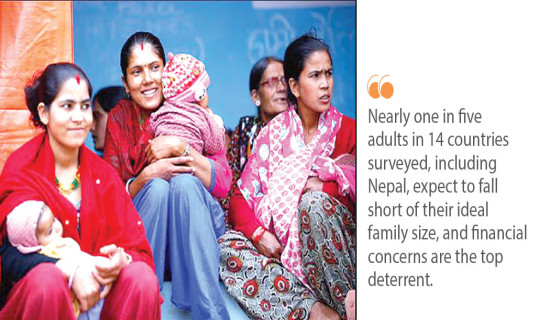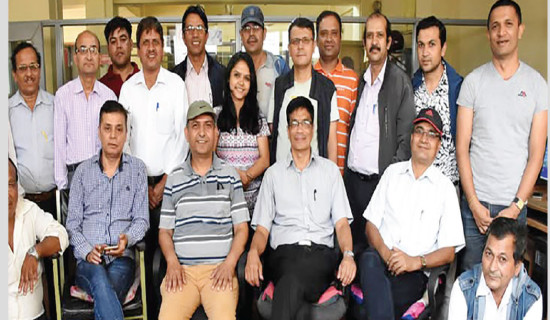- Monday, 5 January 2026
Collective Action Key To Eradicate TB
Combatting tuberculosis (TB) in Nepal continues to be a herculean task, even with attempts to lower the rate of TB infection as well as treatment accessibility. The government has implemented a five-year plan targeting TB; however, almost 50 per cent of people diagnosed with the disease do not get the treatment. According to the National Tuberculosis Control Centre (NTCC), approximately 68,500 new TB patients are reported annually. Of them, 30,000 people do not seek treatment. More worryingly, the highest number of TB cases is found in the capital city, Kathmandu.
With a significant number of untreated TB patients, it has been challenging to eradicate the disease. The experts have warned that if treatment coverage is not expanded, TB will become a far more severe public health crisis. It is very alarming to stay untreated, as not receiving medications indicates that the disease is spreading to others. Many patients avoid treatment for various reasons. TB is still considered a highly contagious and shameful disease, which is a social stigma. Others are unable to access healthcare due to financial constraints. Many patients hide their illness due to the fear of being ostracised in society, and others may not have the financial means to seek treatment. It requires special awareness campaigns and education to reduce the stigma and encourage people that the disease is curable after taking medications.
Budget constraint
Around 6,241 health institutions across Nepal provide TB treatment, with 800 of them offering free treatment and necessary medicines. Medicines and treatment services for TB have been provided through 149 local bodies. The government is committed to fighting TB, hoping to end its epidemic by 2030 and eliminate it by 2050. These goals have been quite challenging, as the various interventions to curb TB cases have not been very fruitful so far.
The country managed to reduce TB cases by only 15 per cent, which raises concerns about the ability to meet its future targets. This is due to the limited budget allocated for TB control and the gap between the number of people affected by the disease and those who seek treatment. The budget of Rs. 1.2 billion for TB prevention and treatment remains insufficient to conduct effective programmes.
According to the World Health Organisation (WHO), 68,000 new cases of TB are detected in Nepal every year, of which 30,000 people fail to seek treatment. Around 16,000 deaths are caused annually due to TB, which is concerning. This shows that 54 deaths per 100,000 people are caused by TB, one of the leading causes of death in the country.
According to experts, 72 per cent of TB cases damage the lungs, while 28 per cent affect other organs, including the brain, kidneys and bones. The statistics concerning TB in Nepal are worrisome. Despite many facilities providing free treatments, there are still many people who don't make the effort to seek assistance. That implies there are larger problems concerning social stigma, economic hardship, and a deficiency in health care coverage.
The government needs to step up by boosting the budget for TB control and providing treatment access in remote and underserved areas. Additionally, raising awareness about the disease and its treatment options can help combat the stigma and encourage those affected to seek help without fear of discrimination. The concerned authorities need to do more to improve access to both treatment and prevention services.
Information campaigns
In addition, developing public information campaigns aimed at decreasing the stigma about tuberculosis is equally critical. Their targets should include having an understanding of what the illness is, its symptoms, and the necessity of getting help.
Once described as 'the white plague', the contagious disease can be cured with timely medication and support from families and society. Changing people's attitudes toward TB influences how willing people are to take action and get treated.
In conclusion, executives of healthcare organisations or institutions need to creatively find solutions for those who are reluctant or incapable of travelling for treatment. Mobile clinics, local health workers, and collaborations with community organisations could really help improve access to TB care in hard-to-reach areas. The government, healthcare providers, and communities need to come together to bridge the gap between how many people are affected by TB and how many actually seek treatment. By tackling stigma, increasing funding, and enhancing healthcare outreach, Nepal can make major progress in controlling and eventually eliminating TB.
(Rijal is a journalist at The Rising Nepal.)

















